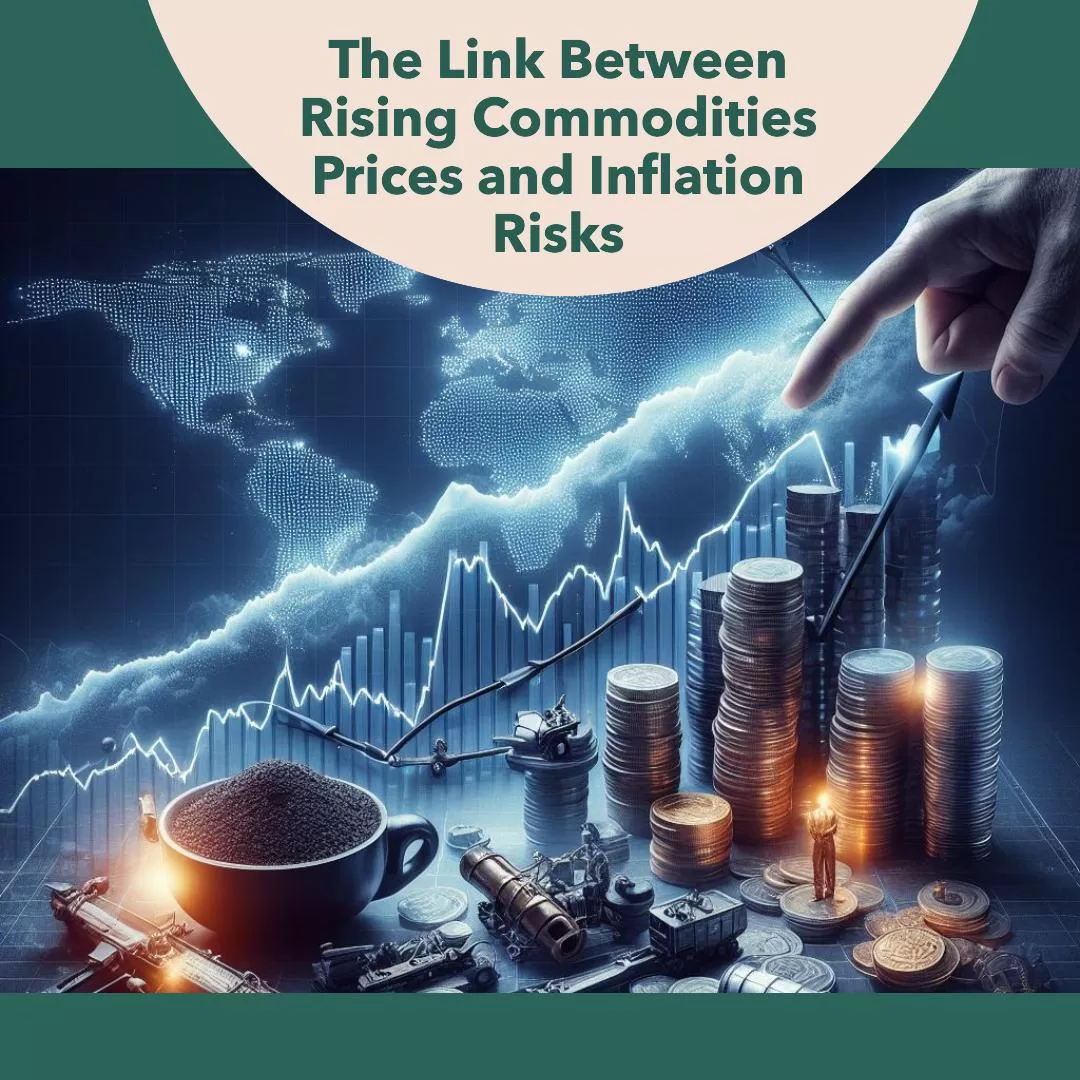As commodities prices surge to new heights, reflecting the strength of economic recovery, a parallel concern emerges: the specter of inflation. While rising commodities prices are often seen as a positive sign of economic vitality, they also carry inherent risks of inflationary pressures. In this article, we explore the intricate relationship between increasing commodities pricing and inflation risks, shedding light on the dynamics at play and offering insights into navigating this complex terrain. The Link Between Rising Commodities Prices and Inflation Risks.

Commodities Surge: A Barometer of Economic Strength
The recent upsurge in commodities prices, spanning essential resources like oil, metals, and agricultural products, serves as a tangible indicator of economic resurgence. As global demand rebounds and supply chains grapple with disruptions, commodities markets experience heightened activity, driving prices upward. This surge reflects robust economic activity, fueled by fiscal stimulus, vaccination drives, and pent-up consumer demand, signaling optimism about the trajectory of the recovery.
Inflationary Concerns: The Flip Side of the Coin
While increasing commodities prices bode well for economic growth, they also raise concerns about inflationary pressures. Commodities serve as key inputs across industries, influencing production costs, consumer prices, and inflationary expectations. As prices rise, businesses may pass on higher costs to consumers, leading to broader inflationary trends. Moreover, supply-demand imbalances, supply chain disruptions, and geopolitical tensions can exacerbate inflationary pressures, adding complexity to the inflation outlook.
Central Bank Response: Balancing Act Amidst Uncertainty
Central banks play a pivotal role in navigating the delicate balance between economic growth and inflationary risks. As commodities prices surge, central banks face the challenge of maintaining price stability while supporting economic recovery. Monetary policymakers must carefully assess inflationary trends, distinguishing between transitory factors and underlying inflationary pressures. Adjusting interest rates, tapering asset purchases, and communicating clear forward guidance are tools at their disposal to manage inflation expectations and anchor long-term price stability.
Impact on Consumers and Businesses
The implications of rising commodities prices and inflation risks reverberate across the economy, affecting consumers, businesses, and policymakers alike. For consumers, higher prices for essential goods and services can erode purchasing power, reducing discretionary spending and impacting household budgets. For businesses, inflationary pressures may lead to margin compression, supply chain disruptions, and pricing challenges, necessitating adaptive strategies to navigate the shifting economic landscape. Policymakers face the dual challenge of supporting economic recovery while safeguarding against inflationary risks, requiring a nuanced approach to policy formulation and implementation.
Navigating Uncertainty: Strategies for Resilience
In the face of increasing commodities prices and inflation risks, stakeholders must adopt proactive strategies to enhance resilience and mitigate vulnerabilities. Businesses can explore options such as supply chain diversification, cost containment measures, and pricing flexibility to adapt to changing market conditions. Consumers can focus on budgeting, savings, and prudent spending habits to weather inflationary pressures and protect financial well-being. Policymakers can prioritize price stability, promote competition, and pursue prudent fiscal and monetary policies to support sustainable economic growth and mitigate inflation risks.
Conclusion: Charting a Course Forward
The surge in commodities prices reflects the strength of economic recovery but also brings inflation risks into sharp focus. Understanding the intricate relationship between increasing commodities pricing and inflation risks is essential for navigating the complexities of the evolving economic landscape. By adopting proactive strategies, fostering resilience, and maintaining vigilance, stakeholders can navigate the challenges posed by rising commodities prices while harnessing the opportunities for sustainable growth and prosperity in a post-pandemic world.
Learn more about accounts receivable factoring
Connect with Factoring Specialist, Chris Lehnes on LinkedIn
